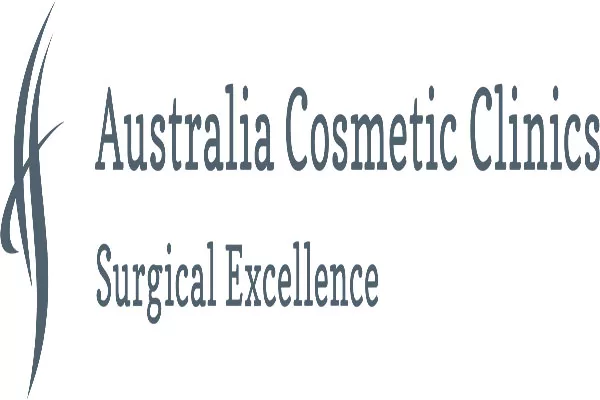As we age, our skin loses elasticity and volume, particularly in the neck area. This can lead to the appearance of sagging skin, wrinkles, and even the dreaded double chin. Many individuals may feel self-conscious about their neck area, and may even avoid certain clothing styles or angles in photos to hide it. However, there is a solution: fillers.
Fillers are a popular cosmetic treatment that can help to restore volume and smooth out wrinkles in various areas of the face and body, including the neck. In this article, we will explore the world of fillers in the neck area, including what they are, how they work, and what to expect during and after treatment. Whether you’re curious about fillers or actively considering them, read on to learn more.
What are fillers and how do they work?
Fillers are a non-surgical cosmetic treatment that involve injecting a substance into the skin to restore lost volume and smooth out wrinkles. The substance used in fillers can vary, but typically includes hyaluronic acid, a naturally occurring substance in the body that helps to hydrate and plump the skin.
When used in the neck, fillers can create a more youthful appearance by filling in loose skin and smoothing out wrinkles. This can also help to redefine the jawline and reduce the appearance of a double chin.
The most common filler used in the neck area is hyaluronic acid, which can be injected deeper into the skin than traditional face fillers to provide a more natural-looking result. Other types of fillers may also be used, depending on the individual’s specific needs and preferences.
Overall, fillers can be a safe and effective option for those looking to rejuvenate their neck area without surgery or downtime. However, it’s important to choose a qualified and experienced injector to ensure the best possible results.
What to expect during a filler treatment for the neck
If you decide to undergo a filler treatment for your neck, the first step will be to schedule a consultation with a qualified injector. During this consultation, you will discuss your goals and expectations for the treatment, as well as any concerns you may have.
On the day of your appointment, your injector will clean the skin in the treatment area and may apply a topical numbing cream to reduce any discomfort. The filler will then be injected using a small needle or cannula, which is a thin tube that allows for more precise injections and reduces the risk of bruising or swelling.
The entire procedure typically takes less than an hour, and most individuals are able to resume their normal activities immediately afterwards. However, you may experience some redness, swelling, or tenderness in the treatment area for a few days following the procedure.
It’s important to follow your injector’s post-treatment instructions to ensure the best possible results and minimize any side effects. This may include avoiding certain activities or skincare products for a period of time, as well as scheduling follow-up appointments to monitor your progress.
Who is a good candidate for neck fillers?
Fillers can be a good option for individuals who are unhappy with the appearance of loose skin, wrinkles, or a double chin in their neck area, but are not ready or willing to undergo surgery. Additionally, candidates for neck fillers should be in overall good health and have realistic expectations for the results of the treatment.
However, there are some individuals who may not be good candidates for fillers, including those who:
- Are pregnant or breastfeeding
- Have a history of severe allergic reactions
- Have an active infection or skin condition in the treatment area
- Are taking blood-thinning medications
It’s important to discuss any medical concerns or medications with your injector during your consultation to determine if fillers are a safe and appropriate option for you.
Possible risks and side effects of neck fillers
Like any cosmetic treatment, neck fillers come with some potential risks and side effects. While these are generally rare or minor, it’s important to be aware of them before deciding to undergo the procedure.
Possible risks and side effects of neck fillers include:
- Allergic reactions
- Infection
- Bleeding or bruising
- Swelling or redness
- Pain or tenderness
- Lumpiness or irregularities in the treated area
- Temporary numbness or tingling
It’s important to choose a qualified and experienced injector to minimize the risk of complications and to follow all post-treatment instructions to minimize any side effects. Be sure to discuss any concerns or questions with your injector prior to the procedure.
How long do the results of neck fillers last?
The duration of results from neck fillers can vary depending on the type of filler used, the individual’s metabolism, and other factors. However, in general, the results of neck fillers can last anywhere from 6 months to 2 years.
The longevity of the results can also depend on how well the individual takes care of their skin and overall health. Proper hydration, sun protection, and a healthy diet can help to prolong the results of neck fillers.
After the initial treatment, maintenance treatments may be recommended at regularly scheduled intervals to maintain the results. Be sure to discuss your specific needs and expectations with your injector to determine the best treatment plan for you.
How much do neck fillers cost?
The cost of neck fillers can vary depending on factors such as the type of filler used, the amount of filler needed, and the injector’s experience and location. In general, you can expect to pay anywhere from $500 to $1,500 per treatment session for neck fillers.
It’s important to keep in mind that the cost of fillers is often not covered by insurance, and may require multiple treatments to achieve your desired results. Be sure to discuss the cost and payment options with your injector during your consultation to determine the best plan for you.
Alternatives to neck fillers
While fillers can be a great option for rejuvenating the neck area, they may not be the right choice for everyone. Some individuals may prefer to explore alternative treatments that can achieve similar results without the use of injectables.
Some alternatives to neck fillers include:
- Kybella: An injection that targets and dissolves fat under the chin to reduce the appearance of a double chin.
- Ultherapy: A non-invasive treatment that uses ultrasound energy to stimulate collagen production in the skin, resulting in smoother, tighter skin.
- Surgery: Procedures such as a neck lift or a facelift can provide more dramatic results for those who are willing to undergo surgery.
It’s important to discuss all of your options with your qualified injector to determine the best treatment plan for your specific needs and preferences.
Finding a qualified injector for neck fillers
When it comes to neck fillers, choosing the right injector is crucial for achieving safe and effective results. It’s important to do your research and choose a qualified and experienced injector who has experience with neck treatments specifically.
Some tips for finding a qualified injector for neck fillers include:
- Research online reviews and before-and-after photos of the injector’s previous work
- Ask for recommendations from friends, family, or other healthcare providers
- Ensure that the injector is licensed, certified, and has undergone the proper training for injectables
- Schedule a consultation to meet with the injector prior to the procedure and discuss their experience, qualifications, and approach to treatment
Choosing a qualified and experienced injector can help to ensure that you achieve the best possible results from your neck fillers.
Conclusion
Fillers can be a great option for individuals looking to rejuvenate their neck area without surgery or downtime. By restoring lost volume and smoothing out wrinkles, fillers can help to create a more youthful and defined appearance in the neck and jawline.
However, it’s important to choose a qualified and experienced injector and to be aware of the potential risks and side effects of the procedure. By discussing your goals and concerns with your injector and following all post-treatment instructions, you can achieve safe and effective results from your neck filler treatment.
If you’re considering neck fillers, be sure to do your research and discuss all of your options with a qualified provider. With the right approach, neck fillers can be a valuable tool for achieving a more confident and youthful appearance.
References:
- American Society of Plastic Surgeons. (n.d.). Dermal fillers. Retrieved from https://www.plasticsurgery.org/cosmetic-procedures/dermal-fillers
- American Society of Plastic Surgeons. (n.d.). Facelift. Retrieved from https://www.plasticsurgery.org/cosmetic-procedures/facelift
- Healthline. (2018, October 31). What to know about hyaluronic acid fillers. Retrieved from https://www.healthline.com/health/hyaluronic-acid-fillers
- International Association for Physicians in Aesthetic Medicine. (n.d.). Consultation and informed consent for facial injectable treatments. Retrieved from https://iaapam.com/portfolio-items/consultation-and-informed-consent-for-facial-injectable-treatments/
- Mayo Clinic. (2018, June 6). Soft tissue fillers. Retrieved from https://www.mayoclinic.org/tests-procedures/soft-tissue-fillers/about/pac-20393475.







